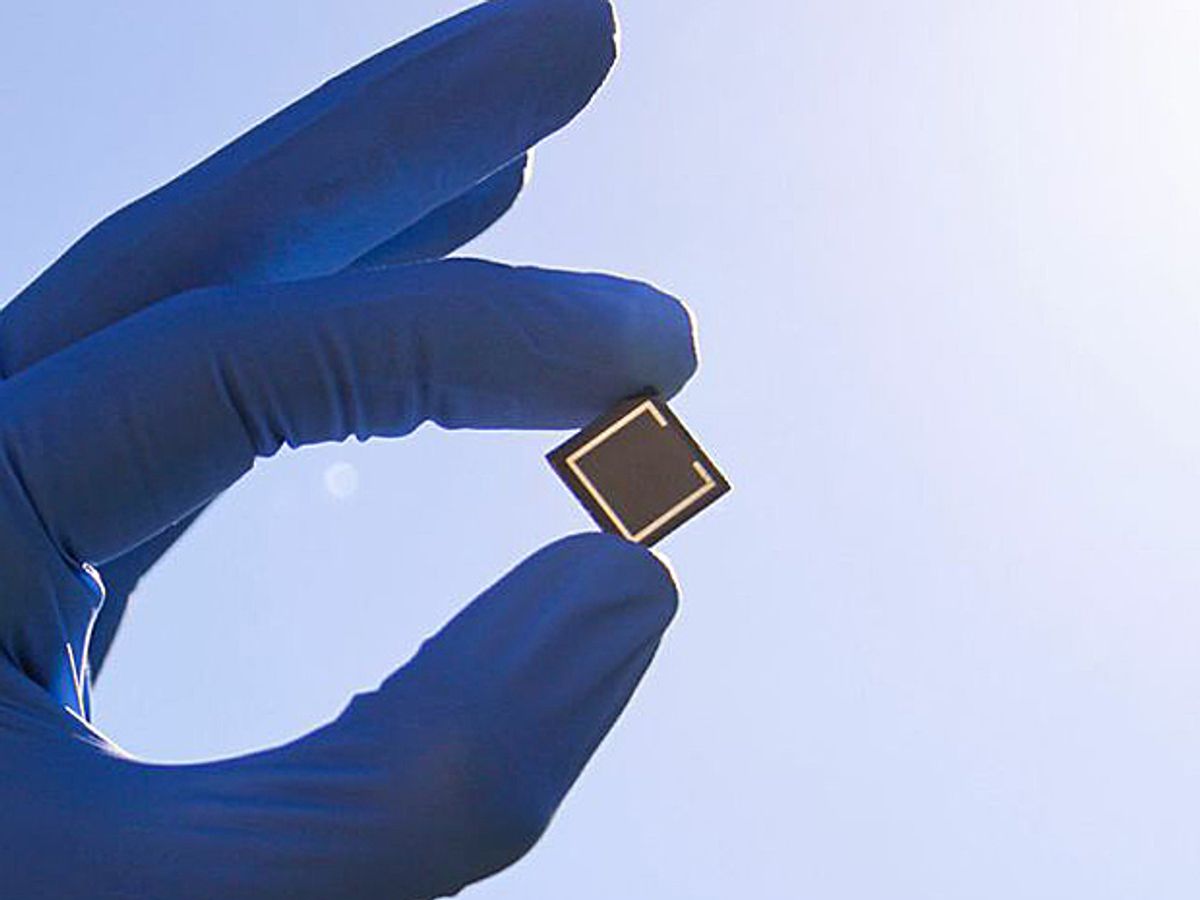By developing a way to coat silicon photovoltaics with crystals known as perovskites, researchers are creating tandem solar cells that may be substantially better at converting light to electricity than conventional solar cells while also being manufactured at low cost.
Although photovoltaics based on crystalline silicon currently account for 90 percent of the global photovoltaic market, the power conversion efficiency of silicon photovoltaics has been at a creep, advancing from 25 percent to 25.6 percent in the past 15 years. In order to produce solar cells with higher efficiencies while making the most of the existing manufacturing capacity for silicon photovoltaics, the industry has explored devices that combine silicon with other materials. But these so-called tandem solar cells, despite offering better efficiencies, have have yet to capture more than a fraction of a percent of the global photovoltaic market. Why? Because they are typically made using expensive processes.
Scientists at MIT and Stanford, hoping to achieve high efficiency without high costs, looked into creating tandem solar cells using perovskites, which have recently become the darlings of the photovoltaic world. The efficiencies of solar cells made from perovskites have shot up from under 4 percent to more than 20 percent in the last five years or so, quickly catching up to silicon. Moreover, perovskites are inexpensive and easily produced in labs. The MIT-Stanford group detailed its findings in today’s online edition of the journal Applied Physics Letters.
In the new tandem solar cells, a layer of methylammonium-lead(II)-iodide perovskite is stacked on top of crystalline silicon. The device also incorporates layers of other materials on top of and between the perovskite and silicon to assist with the flow of electric charge. The perovskite absorbs higher-energy visible photons, while the silicon absorbs lower-energy infrared photons. According to the researchers, dividing the spectrum of sunlight between specialized absorbing layers is more efficient than letting a single layer attempt to convert the entire spectrum by itself.
The team says it developed a 1-square-centimeter tandem solar cell with a 13.7 percent conversion efficiency. The scientists suggest that if they could improve each component of the tandem solar cell to match the highest-quality devices available today, they could achieve an efficiency of roughly 29 percent; ultimately, they predict, perovskite-silicon tandems could surpass 35 percent efficiency.
Charles Q. Choi is a science reporter who contributes regularly to IEEE Spectrum. He has written for Scientific American, The New York Times, Wired, and Science, among others.



